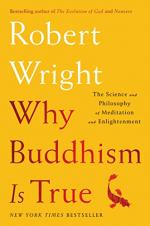
|
| Name: _________________________ | Period: ___________________ |
This test consists of 5 multiple choice questions, 5 short answer questions, and 10 short essay questions.
Multiple Choice Questions
1. The author states that he suspects that our recognition of familiar people, pets, and even objects within our lives is based on what?
(a) Competitive feelings.
(b) Our feelings about them.
(c) Survival tactics.
(d) Our ideas about them.
2. The author states that he suspects that what word is dependent upon "a melange of feelings that you've come to associate with" this object?
(a) Ocean.
(b) Butterfly.
(c) Biscuit.
(d) Cloud.
3. The author introduces what concept in order to urge the reader to find more happiness in his or her own life?
(a) Serenity.
(b) Formlessness.
(c) Emptiness.
(d) Aesthetic beauty.
4. Chapter 10 is entitled "Encounters With the" what?
(a) Formless.
(b) Universe.
(c) Faithful.
(d) Empty.
5. With what system is the dorsolateral prefrontal cortex associated?
(a) The prefrontal cortex system.
(b) The adrenal system.
(c) The endocrine system.
(d) The dopamine system.
Short Answer Questions
1. To what cause does the author attribute his unnatural attachment to a particular type of object?
2. Robert Zajonc equates having feelings about something with performing what other action?
3. What type of plant does the author now recognize as beautiful after his meditation retreat?
4. The author notes that generally, the thoughts that arise during meditation follow how many common themes?
5. When the author discusses his wife in an illustration, whom does he name as a potential stimulus in his wife's environment that would be “seen to not merit extended, conscious appraisal” (163)?
Short Essay Questions
1. Describe Plato's use of the horse and charioteer analogy to comment on the relationship between feelings and the rational self.
2. What emotion is one of the most studied in relation to the phenomenon of modules governing behavior and why?
3. What three careers are used to characterize the three different schools of meditation and on which type does the author focus within Buddhism is True?
4. Discuss the author's perspective of how indulging one's craving once can lead to future indulgences?
5. What is one method the author suggests for a way to observe one's thoughts objectively?
6. What does the author mean when he claims that humans are essentialists?
7. What is the significance of the author's anecdote about the sound of a buzz saw?
8. How does the author use the example of weeds and flowers to make a point about emptiness?
9. What is the purpose of mindfulness meditation and how is it performed?
10. For what purpose does the author discuss his disagreement with a prominent meditation teacher?
|
This section contains 1,259 words (approx. 5 pages at 300 words per page) |

|




